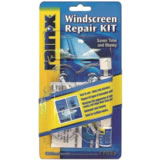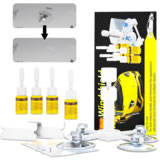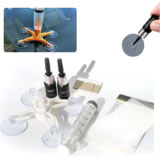Obstructed windshields, cracked windshields, windshield replacement and other laws and regulations are different for every state. Cracked windshield laws in New York prohibit driving vehicles where driver’s view of the road is obstructed.
Can I drive with a cracked windshield in New York?
New York laws prohibit driving with windshields which have cracks, chips, discoloration or other defects that impair driver’s view of the road. Stickers or other objects may not be attached to car windshields if they prevent clear view of the road.
Furthermore, cracks of 11 inches or longer are not allowed in area cleared by windshield wipers.
It is up to each individual police officer to determine if your view of the road is impaired or obstructed. It is recommended to repair cracks or replace windshields immediately.
Other laws and regulations:
- Obstructed windshield regulations: No sign, poster, or other non-transparent material allowed on windshield unless required by law or DMV.
- Replacement windshields: Replacement windshield glass must be of the same kind and quality, and any repairs should restore vehicle to its original state.
- Windshield wipers: Vehicles must be equipped with windshield wipers in good working conditions. Cracks which prevent wipers from operating correctly may be illegal.
- Windshield insurance: Insurance companies may offer policies with no deductible window replacement. See: Can insurance company pay for windshield repairs.
Your vehicle will not pass yearly vehicle equipment inspection in New York if:
- Any window is broken or has exposed sharp or jagged edges.
- Your windshield has a crack longer than 11 inches with any part of the crack in windshield wiper path.
- Your windshield has a star crack longer than 3 inches in diameter.
Federal cracked windshield regulations
Federal regulations require drivers to have a clear vision of the road. Windshield cracks or chips smaller than ¾-inch in diameter are permitted if they are not located within 3″ of another crack.
Any cracks or chips or other damage which can potentially obstruct clear view of the road must not be within critical vision area, defined as area directly above the steering wheel, two inches from the top and one inch from sides.








